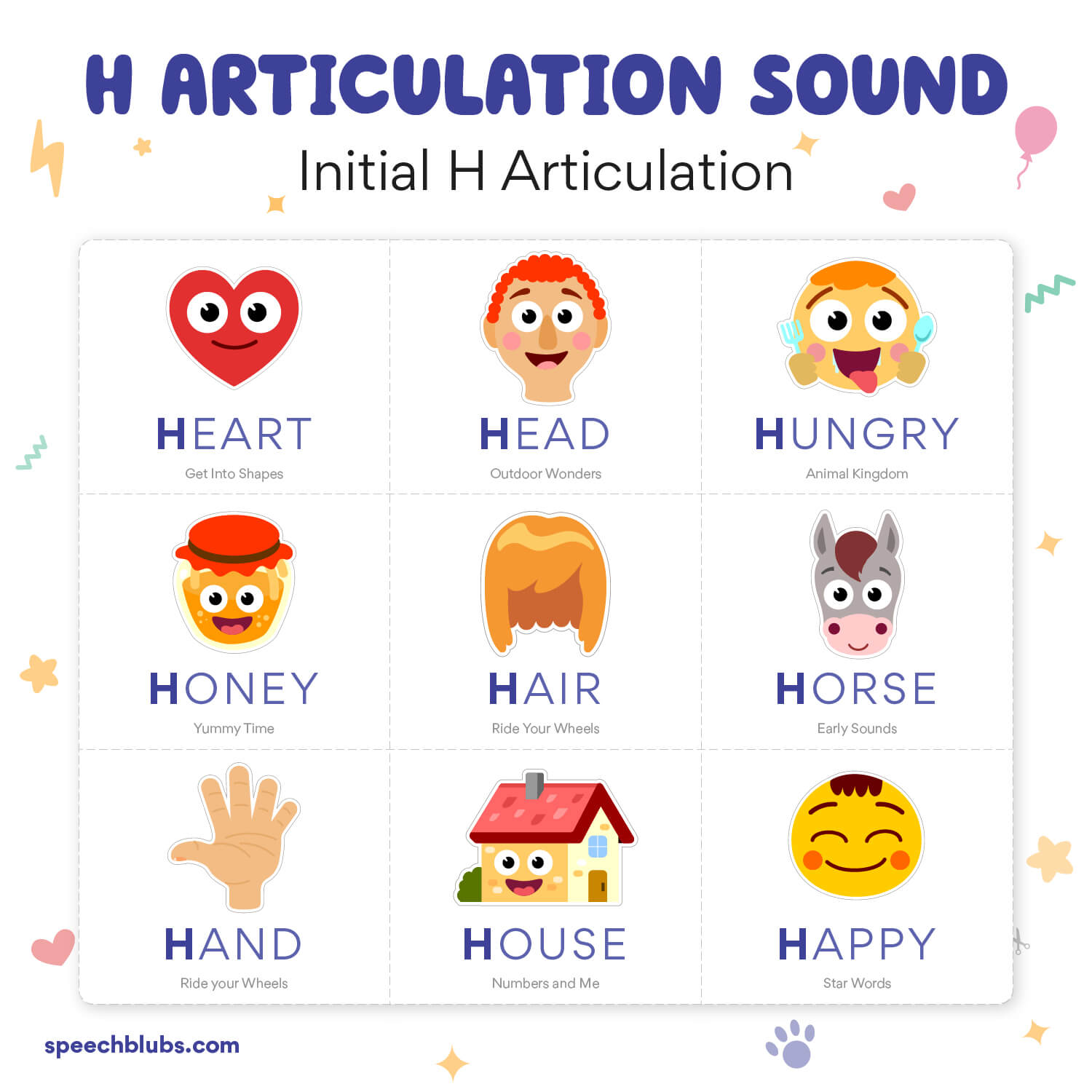Articulation Therapy: The “H” Sound
Jan 15, 2022 In over ten years of practicing as a speech-language pathologist, I have never had a child display difficulty with the H sound. It’s not one of those sounds that is super difficult to produce for kids.
In fact, those who do generally have hearing impairment or velo-pharyngeal incompetence (caused by a cleft palate). If your child does have difficulty with this sound, here are a few tips to help you teach it.
/H/ is produced by constricting the vocal folds enough to impede (stop) airflow, but not enough to make a voiced sound. A way to have your child check this is to have them feel their throat. If their voice is “on,” they will feel a vibration on their neck. When their voice is “off,” like when they produce the /h/ sound, they won’t feel that vibration.
The mouth, tongue and lips are not involved when producing /h/, but usually take the shape of the vowel sound that follows the /h/. For example, think of the word “who.” Your lips automatically shape themselves for the “oo” sound that follows the /h/.
If your child does have difficulty with this sound, here are a few useful tips and tricks that may get them to understand how the /h/ is produced:
- Have the child practice breathing forcefully by saying /h/ or “huh” against a scrap of paper, feather, mirror, or lighted candle. This will give him visual cues as to the forcefulness of breath needed. It’s also fun for them to see the feather move or the candle get blown out.
- Practice /h/ with vowels, such as “ha ha” or “he he.” Have him “whisper loudly” or “blow out” the entire syllable.
- Use ear training to help him discern the difference between a present or absent /h/ sound. Say words with or without the /h/ and have him listen for the /h/ and tell you whether it is present or missing.
- If there is nasal emission of air with the /h/, holding a mirror under the nose can help to make the child aware of this. Holding the nose closed can help with production of more airflow, although this is certainly not a permanent solution. This is usually seen with children who have cleft palate.
As far as speech development goes, this is one of the earliest sounds to develop. Most children begin using the /h/ sound around their first birthday, but don’t master it and start using it in words until their second birthday.
If by 2.5 your child isn’t producing /h/, I would voice your concern to his/her pediatrician to see if a referral to a speech pathologist is warranted.
Show Visual and Audio Cues with the Help of Speech Blubs
Speech Blubs App has multiple activities that you can use to target specific speech sounds. The games are fun and highly engagable so your child won’t even realize that they are working on speech sounds!
Boost Your Child’s Speech Development!
Improve language & communication skills with fun learning!

To practice making the H consonant here is the list of sections and words in them that you can practice with your child:
- Early Sounds: Oooh aaah, Hiss, Hee Haw, Hoo Hoo, Honk, Neigh.
- Wild Animals: Horse, Fish.
- Petting ZOO: Fish, Horse.
- Outdoor Wonders: Hat, Thunder.
- Living Colors: White.
- Yummy Time: Honey, Hod Dog, Cheese
- When I grow up: Teacher, Chef.
- We are Family: Brother.
- Get into Shapes: Heart.
- Numbers and me: Three, Five, Eight, Eighteen, Fifteen, Thirteen,
- School Rocks: School, Teacher.
- This is my Body: Hand, Hair.
- Ride your Wheels: Ship, Choo Choo.
- Universe: Earth, Black Hole.
How To Play Articulation Bingo?
- Use the button below to download our Articulation Bingo Board
- Print out the board and give it to your child or cut out the pictures and put them into a bag
- Let your child pick a word from the board / bag
- Find the word in Speech Blubs App and practice it, play with fun filters and watch educational videos
- Your child is a winner when he practices three pictures in a row (across, down, or horizontally) or the entire board
If your child has difficulties with other sounds, here are the articles that can help you with speech therapy and articulation activities ideas:
- Articulation Therapy: An All-in-One Guide for Parents
- B Sound Articulation Therapy
- JJ and CH Sounds Articulation Therapy
- L Sound Articulation Therapy
- Lisp Articulation Therapy
- M Sound Articulation Therapy
- N Sound Articulation Therapy
- NG Sound Articulation Therapy
- R Sound Articulation Therapy
- S Sound Articulation Therapy
- SH Sound Articulation Therapy
- T and D Sounds Articulation Therapy
- W Sound Articulation Therapy

